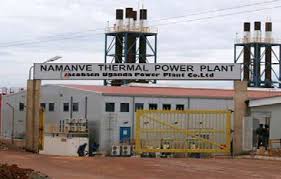KAMPALA – In 2006 Uganda Government took an investment decision to build a thermal energy plant worth $66m (about sh277.2b) on loan, under the management of Jacobsen Elektro a Norwegian firm, and the plant was commissioned in 2008.
The contractor Jacobsen was to operate the plant for six years before transferring it back to the Government with the option of the latter paying off the loan and taking over the plant after that period.
In September last year, UEGCL expressed interest in taking over the plant operations however, the decision was delayed when Jacobsen Elektro, applied to the Ministry of Energy and Mineral Development for an extension of its Implementation Agreement (IA) by another year and that was granted.
The then Permanent Secretary, Robert Kasande explained that this was in the respect that, in the period of one year that has come to an end the ministry, through the Office of the Auditor-General, was to undertake a due diligence study to ascertain the legal, financial and technical status of the power plant prior to the takeover.
The Uganda Electricity Generation Company Limited (UEGCL) has again written to the Electricity Regulatory Authority (ERA) expressing interest in taking over the Jacobsen thermal plant located in Namanve, Mukono district.
ERA has now put it to the members of the public who may have any comments or objections to the applications to write to the agency in conformity.
Eng. Dr Harrison Mutikanga, the UEGCL Chief Executive Officer has said that the team is waiting for the Auditor General to review the status of the asset UEGCL intends to take over and that has been completed. The loan has been fully repaid and Government can take over the plant at a fee of sh1,000.
Thermal plants are the most expensive electricity source selling their power to Uganda Electricity Transmission Company Limited (UETCL) at US¢18 (about sh640), the second thermal plant in Uganda is the Electromaxx plant located in Tororo district.
Currently, Uganda’s installed generation capacity stands at 1,268MW. However, end of last year, thermal energy contributed only 1% of the total energy purchased by UETCL.
Thermal energy was one of the alternatives Uganda resorted to after, a fall in Lake Victoria water levels in 2005; that saw the country’s energy muscle stifled with a lot of load shedding for about seven years until the commissioning of the Bujagali power plant in 2012.
The thermal plant is considered a fallback plan in case of emergence or requirement for extra power and has thus been since 2014 receiving a one-year renewal upon each expiry.












































Discussion about this post